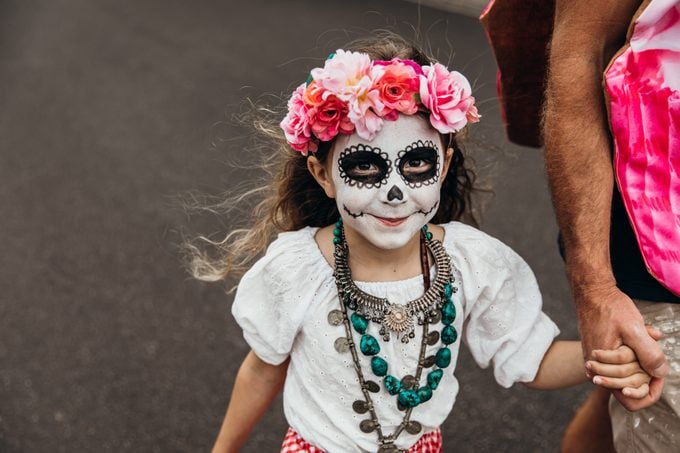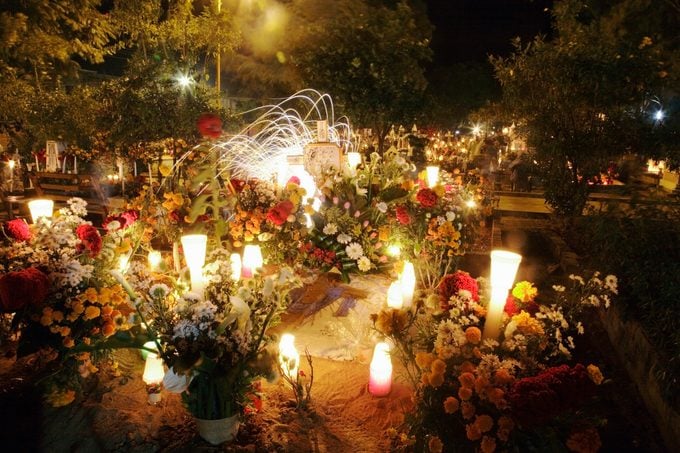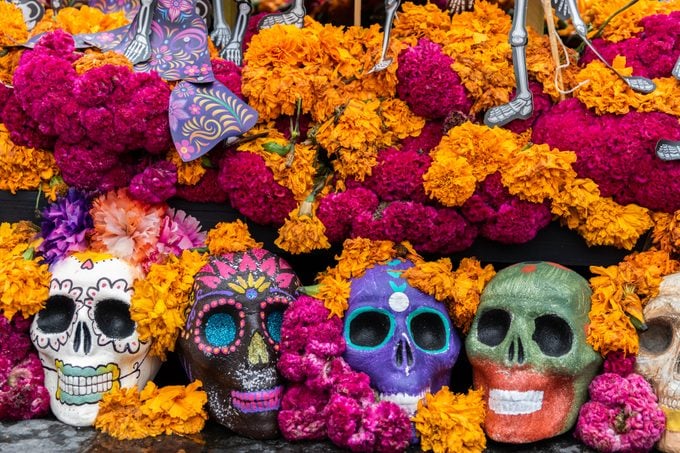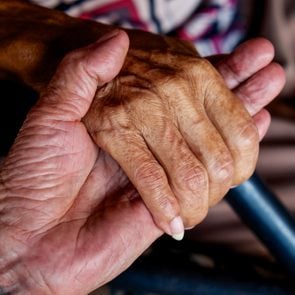What Is Day of the Dead? 5 Things It Can Teach You About Grieving
Updated: Mar. 16, 2022
Day of the Dead, or Día de Muertos, is a celebration of life and death. This is what it can teach you about grieving the loss of a loved one.
A celebration of life and death
If you’ve heard of Day of the Dead—known in Spanish as Día de Muertos or Día de los Muertos—but never celebrated it, you may wonder: How can death possibly be a cause for celebration?
You have to go back 3,000 years for the answer. That’s when indigenous groups in Mexico and Central America—including Aztec, Maya, and Toltec—began celebrating their deceased relatives.
They believed mourning them would be an insult to their memory. After the Spanish arrived, the ritual was intertwined with two Spanish holidays: All Saints’ Day and All Souls’ Day (Nov. 1 and Nov. 2).

Day of the Dead is not Halloween
Although Halloween is celebrated right before Day of the Dead, it’s nowhere near the same. For one thing, Halloween focuses on the scary aspects of death—namely, our fear of mortality. Day of the Dead, on the other hand, is a happy, joyous occasion.
Originally called All Hallows’ Eve, Halloween originated with the ancient Celtic festival of Samhain. During Samhain, people created bonfires and dressed up in costumes to ward off ghosts.
“All Hallows’ Eve was believed to be a time when the veil between the earth and other worlds was thin,” says grief and death expert Kriss Kevorkian, PhD, founder and CEO of A Grieving World. “Ghosts returned to earth and there were celebrations mostly among the Celts. Halloween, today, doesn’t include much honoring of the dead.”
That’s where Day of the Dead comes in.
Honoring the dead with food, drinks, and dancing
During Day of the Dead, families invite the souls of deceased relatives to come back for a reunion. Traditionally, that includes temporary altars with offerings commemorating their loved ones (altares de muertos or ofrendas). It also includes lots of food and drink, dressing up, and dancing.
The Day of the Dead is not a single day but actually a celebration from October 31st to November 2. The first day (November 1st), is to honor infants and children who have died, and the second day (November 2nd), is to honor adults who have passed on.
Day of the Dead is celebrated mostly in Mexico and parts of Central and South America. But it’s become increasingly popular in Latino communities around the world. “There are benefits to mourning and celebrating the life of a loved one who has died,” says Kevorkian. “We want to mourn the loss, but also celebrate the fact that we had such a relationship.” (Here are some mourning quotes that may help you heal.)
“That helps us remain connected, grateful, and appreciative of the love that was shared,” she adds. “Celebrating also helps us to understand that we shouldn’t take our loved ones for granted.”
Here are five things Day of the Dead can teach you about grieving.

Grieving has no time frame
According to a review of studies published in 2019 in Psychosomatic Medicine, the death of a loved one is the greatest life stressor we can face. Forcing a sense of closure only adds to the stress.
“Sadly, we are limited in our grieving due to work schedules, bereavement leave, family obligations, and our own desire not to hurt,” says Kevorkian. “But grief manifests in its own time. Give yourself time to listen to your grief rather than trying to make it fit into a particular construct. It can be painful. But it can be reframed a bit. Acknowledge how fortunate you were to have had a love so great that to lose it caused so much pain.”
(Learn about anticipatory grief and how it’s different.)
A funeral can be fun (yes, really)
Most people tend to think of funerals as sad, somber occasions. But it’s possible to honor the memory of your loved one by celebrating their life.
Day of the Dead traditions involve dressing up, dancing, singing, and preparing foods that the celebrated person loved.
“Celebrations remind us of all that your loved one accomplished in life,” says Kevorkian. “That tends to help you move forward in your grief.”
But don’t force it, she adds. “Create your own traditions. If celebrating your loved one helps you grieve, by all means, celebrate. But do so when and how it feels right for you.”
Death is a normal part of life
“Cultural practices like Dia de los Muertos in Mexico, the Qingming holiday in China, or the Obon festival in Japan all emphasize, normalize, and ritualize the continuing bonds that link the living with the dead across generations,” says Robert Neimeyer, director of the Portland Institute for Loss and Transition in Portland, Oregon. That helps “people retain—rather than relinquish—life-defining attachments even across the boundaries of life and death.”
One way cultures that celebrate Day of the Dead normalize death: They create temporary altars (ofrendas) and adorn them with things meant to provide the deceased what they need on their journey.
Traditionally, according to the Smithsonian Latino Center, that includes paper banners, food like Mexican bread, a pitcher filled with water so the spirits can quench their thirst, and candles to help light their way.
You can create your own ofrenda of sorts—any time of the year. Display a collection of snapshots, mementos, and other objects that were meaningful to your loved one.
“You can accept that your loved one is no longer here,” says Kevorkian. “But that doesn’t mean you have to forget them.”
Your relationship continues
Day of the Dead traditions support the idea that your relationship with the deceased isn’t over; it’s simply changing. Grief experts say that having a continued relationship can be healing.
Look for ways to continue the relationship with your loved ones that are comfortable for you. Storytelling, for example, is a good strategy for coping with loss; so is journaling.
“My grandparents died when I was younger,” says Kevorkian. “But I still celebrate their birthdays out of gratitude for having such loving people in my life. Some might want to celebrate once or twice a year. Others might not want to celebrate at all. Grief is unique to each of us.”
You can learn from the loss
Loss is never easy. But grief can teach you how to value life and those you love. “We can all seek a broader sense of self, whether trans-situational, trans-generational, or transcendental,” says Neimeyer.
“By living well, we prepare ourselves for dying well one day. Be friendly to the whole range of human experiences—joy and grief, security and fear, knowing and not knowing—without clinging to or resisting any of them. That can allow you to embrace life in all its pain, pleasure, and paradox, and accept what is both durable and impermanent in your life.”




















